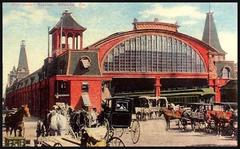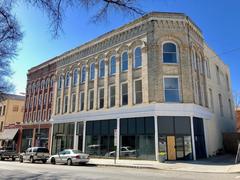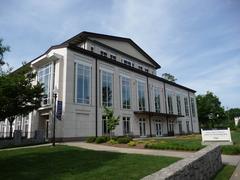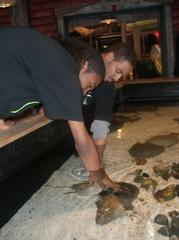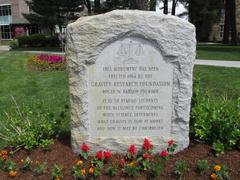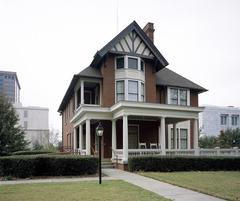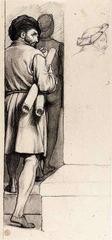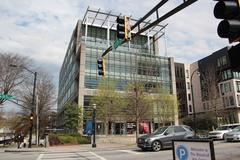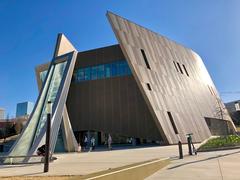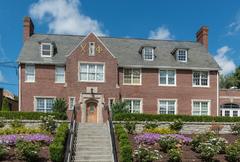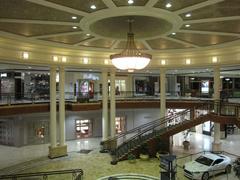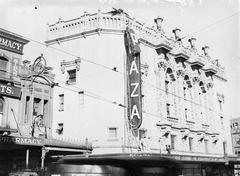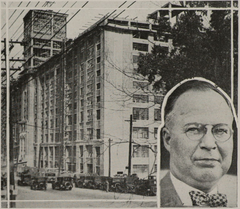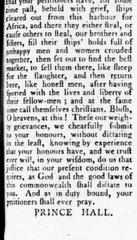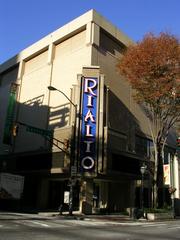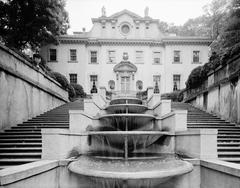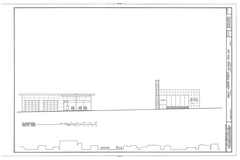
St. Luke’s Episcopal Church Atlanta: Visiting Hours, Tickets, and Travel Guide
Date: 04/07/2025
Introduction
St. Luke’s Episcopal Church in Atlanta is a cornerstone of the city’s historical, architectural, and cultural landscape. Founded in 1864 during the Civil War by Reverend Charles Todd Quintard, the church has transformed over the decades from a humble wooden structure to a striking example of Gothic Revival architecture on Peachtree Street. Beyond its architectural splendor, St. Luke’s is deeply woven into Atlanta’s community life, noted for its social justice initiatives, music, and art. This comprehensive guide covers everything you need to know about visiting St. Luke’s Episcopal Church—its rich history, architectural highlights, visitor information, and tips for making the most of your experience.
Table of Contents
- Historical Overview
- Architecture and Art
- Visitor Information
- FAQs
- Conclusion and Visitor Tips
- References and Further Reading
Historical Overview
Founding and Early Years (1864–1870)
St. Luke’s Episcopal Church was established during the American Civil War, answering the spiritual needs of Atlanta’s citizens amid turmoil. On March 28, 1864, Rev. Charles Todd Quintard led the founding of the parish and the construction of its first building at Broad and Walton Streets. This original wooden structure, consecrated by Bishop Stephen Elliott, quickly became a community center and hosted significant events, including the funeral of Leonidas K. Polk (Georgia Historical Society, Wikipedia, St. Luke’s History). The church, however, was destroyed during the burning of Atlanta in 1864.
Rebuilding and Growth (1870–1906)
After the war, the parish reorganized as St. Stephen’s in 1870 and soon returned to its original name, St. Luke’s, in 1872 (St. Luke’s History). A new building was constructed at Spring and Walton Streets in 1875. In 1881, St. Luke’s was designated the cathedral of the Diocese of Georgia, the first in the state, before it reverted to parish status in 1894 due to financial constraints (Wikipedia, Georgia Historical Society).
Peachtree Street and Architectural Significance (1906–Present)
With Atlanta’s population shifting northward, St. Luke’s moved to Peachtree Street in 1906, commissioning architects P. Thornton Marye and A. Ten Eyck Brown to design its current Gothic Revival structure (Wikipedia, New Georgia Encyclopedia). This relocation placed St. Luke’s among Atlanta’s major churches, reflecting the city’s growth and the congregation’s resilience.
Leadership and Social Outreach
St. Luke’s has been led by influential rectors, including Dr. Cary B. Wilmer, who steered the parish through its early 20th-century growth and fostered a reputation for social justice (St. Luke’s History). The church has launched and supported key Atlanta organizations, such as the Atlanta Community Food Bank, Crossroads Community Ministries, and The Frazer Center. Its ongoing outreach programs address homelessness, education, food insecurity, and social equity (St. Luke’s Official Site).
Architecture and Art
Exterior and Interior Features
St. Luke’s is a notable example of early 20th-century Gothic Revival architecture. Its red brick exterior, vertical emphasis, pointed arches, structural buttresses, and prominent bell tower distinguish it as a landmark on Peachtree Street (Curbed Atlanta). The church’s sanctuary features soaring ceilings, exposed wooden beams, ornate woodwork, and a traditional Episcopal layout with a central nave and chancel.
Stained Glass, Mural, and Pipe Organ
The church’s sanctuary is illuminated by stained glass windows from leading studios, including Franz Mayer Studios (Germany), Heaton, Butler & Bayne (London), and Willet Studios (Philadelphia), depicting biblical narratives and saints (St. Luke’s Venue Details). Above the High Altar, the mural “Christ as the Good Shepherd” by Edwin H. Blashfield, installed in 1913, serves as a focal point for visitors and worshippers alike.
Music is central to St. Luke’s identity. The Alston Memorial Organ, installed in 1963 and expanded in 2000, comprises nearly 5,000 pipes and is renowned for its versatility and acoustics, hosting concerts and American Guild of Organists events (AGO Atlanta 2020).
Bell Tower and Campus Development
The bell tower, completed in 2000, houses a ring of ten bells, with the oldest dating to 1924. The church campus features “The Park at St. Luke’s,” created in partnership with the Georgia Department of Transportation, and a memorial garden. A major sanctuary renovation was completed in 1999, and a columbarium was added to the bell tower’s lower level (St. Luke’s History).
Visitor Information
Visiting Hours and Admission
- Monday–Friday: 9:00 AM – 5:00 PM
- Sunday: 8:00 AM – 1:00 PM
- Saturday: 10:00 AM – 4:00 PM (for special events and tours; confirm ahead)
Admission is free. No tickets are required for self-guided visits. Donations are welcomed to support preservation and outreach efforts (St. Luke’s Official Site).
Guided Tours and Special Events
Guided tours are available by appointment and offer deeper insights into St. Luke’s history, architecture, and social impact. The church regularly hosts concerts, lectures, art shows, and community forums. For schedules and reservations, consult the St. Luke’s What’s On page.
Accessibility and Amenities
St. Luke’s is fully accessible, offering wheelchair ramps, accessible restrooms, and assistive listening devices. Visitors with special needs are encouraged to contact the church office in advance (St. Luke’s Episcopal Church). The church also features a gift shop with books and souvenirs.
Getting There and Nearby Attractions
- Address: 435 Peachtree Street NE, Atlanta, GA 30308
- Public Transit: Accessible via MARTA rail (North Avenue or Civic Center stations) and multiple bus lines
- Parking: On-site and nearby public garages (spaces may be limited during major events)
Nearby attractions include the Fox Theatre, High Museum of Art, Piedmont Park, Atlanta History Center, and the Martin Luther King Jr. National Historical Park.
Photography and Virtual Resources
Photography is permitted for personal use outside worship services and special events. High-quality images and virtual tours are available on the church’s website (Virtual Tour).
Frequently Asked Questions (FAQ)
Q: What are the visiting hours for St. Luke’s Episcopal Church?
A: Monday to Friday: 9:00 AM–5:00 PM; Sunday: 8:00 AM–1:00 PM. Saturday hours for tours/events; check ahead.
Q: Is there an admission fee or are tickets required?
A: General admission is free; donations are appreciated.
Q: Are guided tours offered?
A: Yes, by appointment. Contact the church office or book via the website.
Q: Is the church accessible to people with disabilities?
A: Yes, St. Luke’s is fully accessible.
Q: Can I attend worship services without prior registration?
A: Yes, all are welcome at services.
Q: Is photography allowed inside the church?
A: Photography is permitted outside of services; please check with staff during events.
Q: Is parking available?
A: Limited on-site parking; additional public parking nearby. MARTA is recommended for easy access.
Conclusion and Visitor Tips
St. Luke’s Episcopal Church is much more than a historic building—it is a vibrant center for faith, music, art, and social action in Atlanta. From its Gothic Revival architecture and world-class stained glass to its pivotal role in founding major Atlanta charities, St. Luke’s stands as a testament to resilience and community spirit. Free and accessible to all, it welcomes visitors for quiet reflection, cultural events, and educational tours.
Tips for your visit:
- Visit during weekday mornings or early afternoons for a quiet experience.
- Check the events calendar for concerts and cultural programming.
- Combine your visit with downtown Atlanta’s top attractions.
- Respect worship times and community activities when taking photographs.
- Download the Audiala app for guided audio tours and real-time updates.
For the latest information, always consult the official St. Luke’s Episcopal Church website.
References and Further Reading
- St. Luke’s Episcopal Church (Atlanta) historical marker, Georgia Historical Society
- St. Luke’s Episcopal Church (Atlanta) Wikipedia entry
- St. Luke’s Episcopal Church official history archive
- St. Luke’s Episcopal Church official website
- Curbed Atlanta, Historic Churches Map and Architecture
- New Georgia Encyclopedia, P. Thornton Marye
- AGO Atlanta 2020 official venue information for St. Luke’s Episcopal Church
For further exploration:
Image Descriptions:
- St. Luke’s Episcopal Church at sunset, highlighting Gothic architecture. (Alt: “St. Luke’s Episcopal Church historic building in downtown Atlanta”)
- The Alston Memorial Organ during a concert. (Alt: “Alston Memorial Organ at St. Luke’s Episcopal Church”)
- Guided tour group inside the nave. (Alt: “Guided tour inside St. Luke’s Episcopal Church”)
Experience a virtual walkthrough and view the location on an interactive map here.









